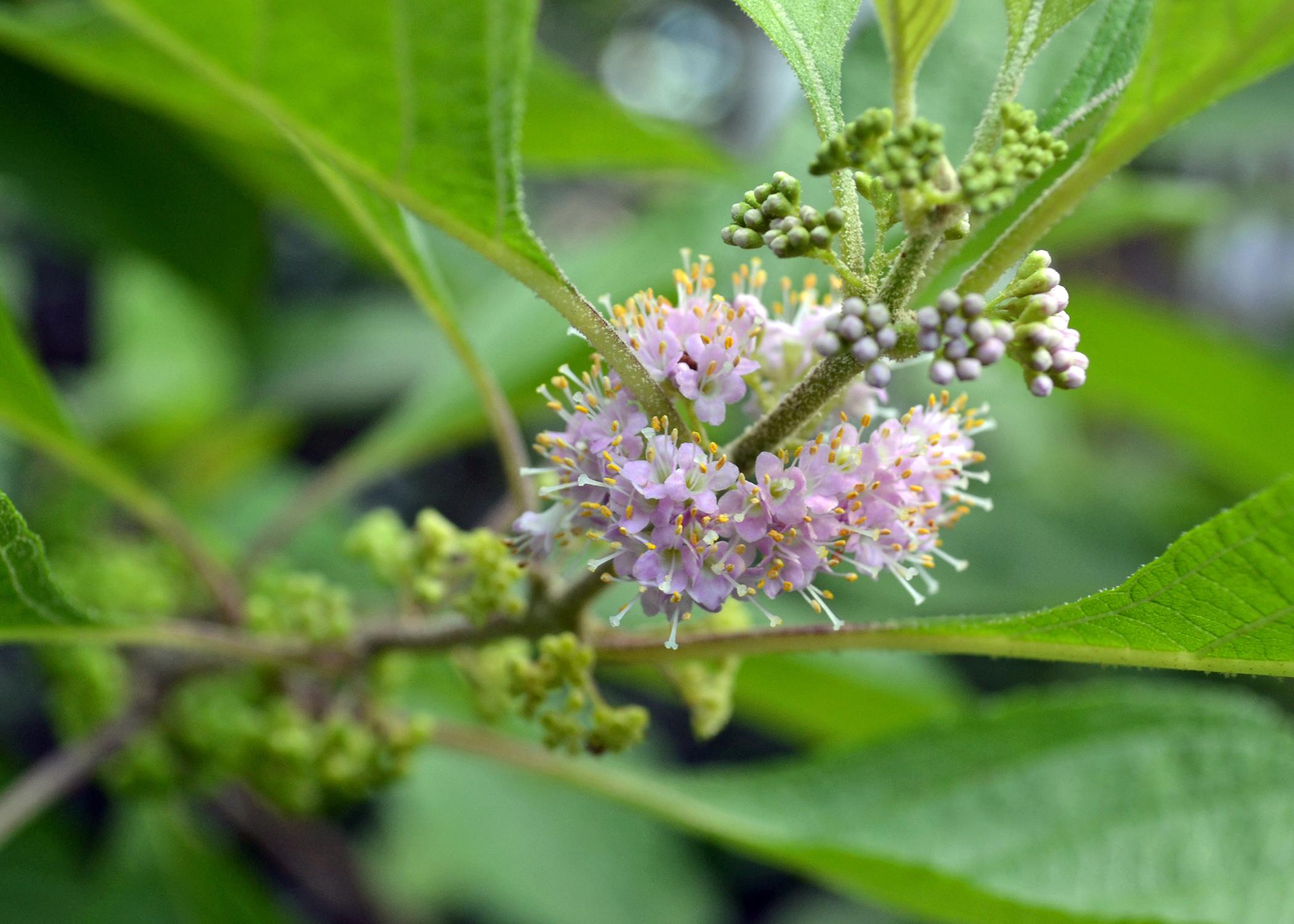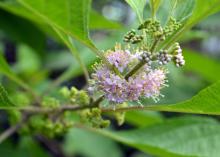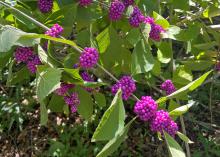American beautyberry lives up to its name
I have noticed that more gardeners than ever are interested in having native plants in their landscapes.
This trend just makes sense. Native plants occur naturally in a region without being introduced by humans. They are adapted to their region and do not require a lot of maintenance or upkeep.
One native plant you might like to include in your landscape is the American beautyberry.
The deciduous, native American beautyberry shrub, known scientifically as Callicarpa americana, is the variety most gardeners know about. Callicarpa comes from two Greek words meaning beautiful and fruit, giving us the common name “beautyberry.”
This plant makes quite a statement in the landscape with its gorgeous display of bright purple fruits in the fall.
Beautyberries grow well in partial shade to full sun. They typically grow up to 4 feet tall and wide and have a loose, open habit. Under favorable growing conditions, I have seen beautyberries reach 8 to 10 feet tall.
You can find inconspicuous white or light pink flowers on new growth from June to July. The beautyberry produces these small clusters of flowers near the stems, and soon after, fruit clusters form.
As summer winds down, these small, green fruits turn a gorgeous purple that looks especially appealing against the backdrop of lovely green leaves. The beautiful, metallic purple fruits are bright and shiny, arranged in clusters at the leaf nodes, and held tightly along the arching branches.
Best fruit production comes from having multiple plants in full sun with consistent soil moisture.
In late fall, the leaves fall off the plants, but the fruit remains and may last through early winter. Beautyberry fruit is a good food source for songbirds and small mammals.
If you’re looking for natural decorations in the fall, the long-lasting beautyberry branches can make colorful additions to flower arrangements.
In the landscape, beautyberry can be used as a backdrop for fall-blooming plants. It also makes a great addition to a wildlife or pollinator garden.
Late winter or early spring is a great time to prune beautyberry because flowers are produced on new growth. Pruning can maintain the height and shape of the shrub. Severe pruning of large, vigorously growing plants will result in rounded shrubs with many long shoots that flower heavily and produce an abundance of fruit clusters.
The only drawback to beautyberry is its relatively short lifespan, which can be as few as 10 years. However, it readily spreads by self-sown seeds, providing future generations of plants.
I have read that the crushed leaves of beautyberry produce a chemical that can repel mosquitos, ticks and fire ants. Be cautious about trying this because it might cause an allergic reaction on your skin.
I love the American beautyberry in my landscape and recommend you plant one in yours, too.





